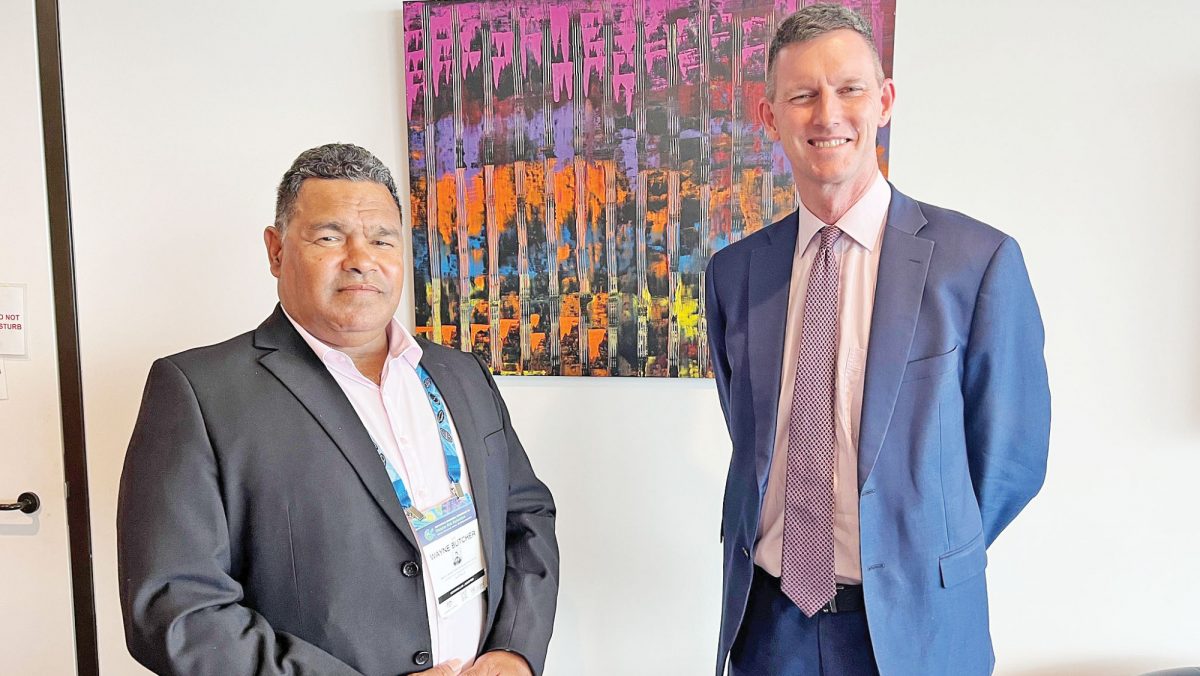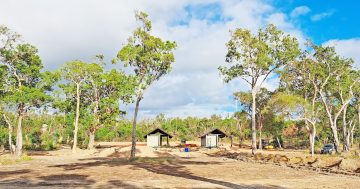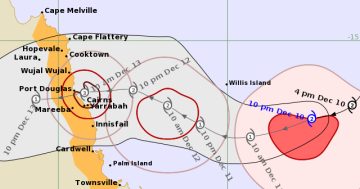
Lockhart River mayor Wayne Butcher and Transport Minister Mark Bailey in Brisbane for the Disaster Risk Reduction conference held last week.
WAYNE Butcher will never forget the howling winds he heard the night Cyclone Trevor swept through Lockhart River.
“It absolutely roared all that night,” the mayor said of the category three cyclone.
“It got up to 200km/h gusts. A lot of people were surprised by it.
“When we all came out of it you could see the look on the faces of people in the community. It was like, ‘wow’. You knew you’d experienced something.”
Last week the Cape York mayor gave a presentation on “old Trev” at the United Nations’ Asia Pacific Ministerial Conference on Disaster Risk Reduction in Brisbane.
The cyclone which crossed the coast just south of Lockhart River on March 19, 2019 damaged buildings and cut roads due to flooding.
But thankfully, Cr Butcher said, the community was ready for it.
“The critical part for us was preparation,” he said.
“Over the years we’ve invested in getting dwellings up to a good standard. There’s also been investment in water and sewerage infrastructure.
“Having all that in place made it easier.
“Also, every November we pick up any debris or anything that looks like it’ll be a flying object.
“You can build a house to category five standard but it’s the debris that does the real damage.”
Sadly, the Iron Range rainforest wasn’t so fortunate with trees felled and defoliated by the cyclonic winds.
The debris led to major bushfires later that year, Cr Butcher said.
“Mother Nature made the rainforest over thousands over years and Trevor destroyed it in 12 hours,” he said.
“You can see it’s still struggling to recover today.
“It took the canopy off and left a lot of fuel on the ground. I never thought I’d see a rainforest burn in my life.
“That was so sad to see that happen.”
The Bureau of Meteorology confirmed that a La Niña event was under way in the Pacific Ocean, increasing the likelihood of above-average rainfall this wet season.
“During La Niña events, waters in the eastern tropical Pacific Ocean are cooler than normal and waters in the western tropical Pacific Ocean warmer than normal,” said the head of long-range forecasts Andrew Watkins.
“This causes changes in wind, cloud and pressure patterns over the Pacific.
“When this change in the atmosphere combines with changes in ocean temperature, it can influence global weather patterns and climate, including increasing rainfall over large parts of Australia.”
Representatives from Wujal Wujal and Cook Shire also attended the conference.







